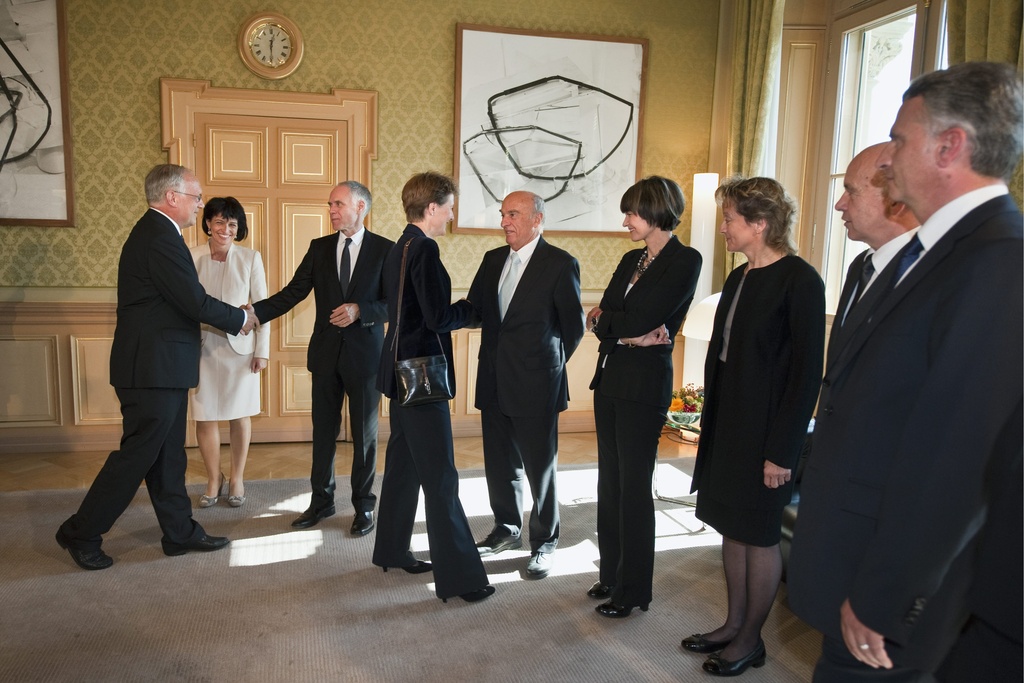Political fault line shifts to boost extremes

Support for a political party is increasingly defined by attitudes towards isolationist traditions or social and political integration, researchers have found.
This could help explain the recent polarisation of the political climate in Switzerland and the relative weakness of the centre-right, according to an extensive study which is based on findings on the last parliamentary elections of 2007.
The new pattern appears to override the customary conflict pitting voters for and those against more social equality or a strong state.
Georg Lutz, political scientist and co-editor of the study says the trends in Switzerland are set against a backdrop of globalisation and are in line with other European countries.
“Globalisation triggered fears in Switzerland and some people began to consider defensive strategies to counter the perceived loss of values,” Lutz said.
He adds that a similar reaction can be found in other countries where rightwing populist parties have gained ground.
The Swiss People’s Party was one of the winners of the 2007 parliamentary elections and is trying to set the political agenda for a repeat in next year’s ballot, Lutz says.
The study found that they exploited their voters’ potential most efficiently. “They used their resources far better than other parties in 2007 and proved that they have a good political instinct,” Lutz said.
Identity and economy
The Swiss People’s Party finds overwhelming support among production and service workers as well as small-business owners. To a large extent this is the former electoral basis of the centre-left Social Democrats.
The authors of the study say it is puzzling to see the less affluent classes vote for the People’s Party that most opposes social security and re-distribution.
The preferences are explained by a shift in the importance of different political fault lines, first apparent in the early 1990s.
“It is not so much the economy and redistribution that divide the electorate, but identity issues such as international integration and multiculturalism that matter most,” Lutz said.
Pascal Sciarini, political scientist at Geneva University, adds that many of the findings of the study are not entirely new, but provide scientific proof of what has been frequently observed.
Shifts and potentials
The study concludes that the 2007 elections were marked by a new widening gap, as well as by a trend towards strong political divisions and more centralised parties – which are rooted in the country’s 26 cantons.
The traditional identities of the parties have begun to shift in the past few decades, and with that, the long-standing system of power-sharing.
The ongoing discussions about the so-called Magic Formula for dividing out cabinet seats – the gentlemen’s agreement between the four main parties in place between 1959 and 2003 – is the logical result, says Lutz.
Yet it remains to be seen to what extent the 2011 elections will be marked by questions of cultural identity or by economic issues and who would benefit most: the rightwing People’s Party or the centre-left, including the Greens.
The latter are incidentally the party with an impressive growth potential, the authors of the study say. However, the Greens have not been able to exploit their potential properly as they have to share the middle ground with the Social Democrats who attract a similar, but older electorate.
Middle ground
As for the centre-right parties, they do not seem to sit very comfortably in the new model.
They occupy a middle ground between traditionalism and political openness and even between seemingly contradictory values of market liberalism and state intervention.
The study also found that voters and the elite of centre-right parties – the Radicals and the Christian Democrats – tend to be more homogenous than those of the high-profile People’s Party or the Social Democrats.
Not included in the survey is an increasing trend over the past two years of a fragmented centre-right. Smaller groups in this political segment, notably the Liberal Greens, have a considerable potential as a recent study the gfs.bern research institute showed.
Parliament, made up of the House of Representatives and the Senate, has 246 seats and is elected for four years.
The current term ends in 2011.
At least 12 political parties represent the political spectrum from the Federal Democratic Union to the Communist Party.
The five main parties are the People’s Party, the Social Democrats, the Radicals, the Christian Democrats and the Greens.
The Conservative Democrats and the Liberal Greens are more moderate split offs from the People’s Party and the Green Party respectively.
The study is based on nearly 4,400 interviews with voters following the 2007 parliamentary election.
Researchers also polled all the 3,181 candidates in the election – more than half of them took part in the study.
Selects is a joint project of several Swiss universities and the federal administration. It is funded by the Swiss National Science Foundation.
Founded in 1995 it also participates in international comparative networks.

In compliance with the JTI standards
More: SWI swissinfo.ch certified by the Journalism Trust Initiative














You can find an overview of ongoing debates with our journalists here . Please join us!
If you want to start a conversation about a topic raised in this article or want to report factual errors, email us at english@swissinfo.ch.